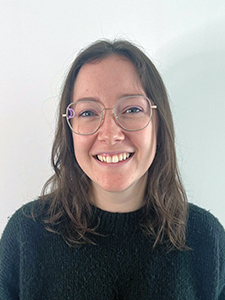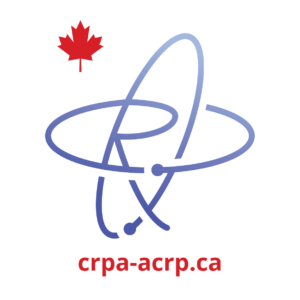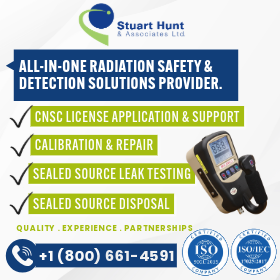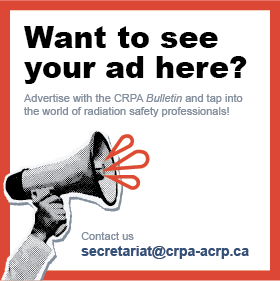Concours de communications étudiantes Anthony J. Mackay 2025 : Découvrez les finalistes de cette année
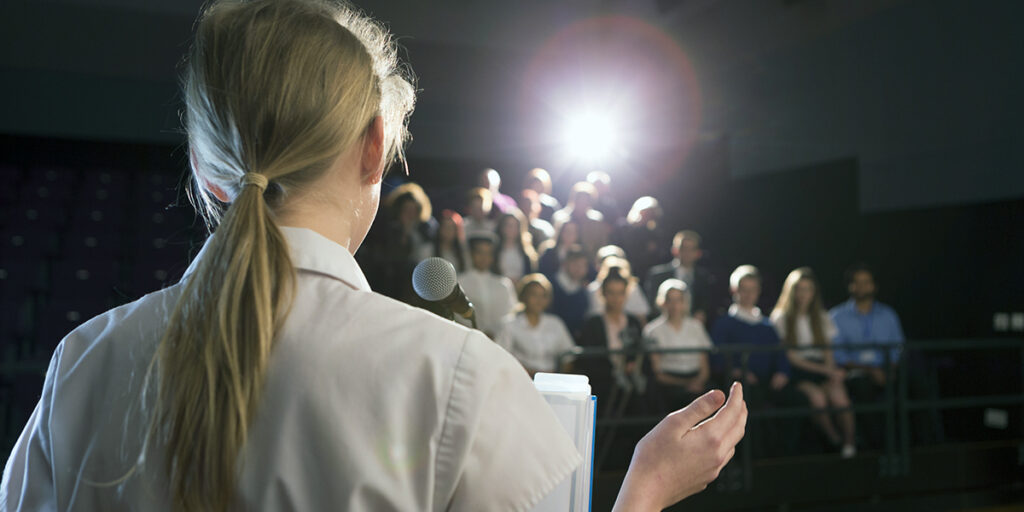
Chaque année, le Comité des étudiants et des jeunes professionnels organise, conjointement au congrès annuel de l’ACRP, un concours de communications écrites pour les étudiants. Le concours est ouvert à tous les étudiants inscrits à temps plein dans un programme relié aux sciences des rayonnements, dans un établissement d’enseignement (collège ou université) canadien.
Les participants doivent soumettre un résumé de 750 mots maximum sur un sujet relié à un aspect du rayonnement ; le sujet est intentionnellement gardé très général afin de permettre la participation d’étudiants et d’étudiantes provenant de disciplines diverses.
Trois finalistes sont sélectionnés pour présenter leurs travaux au congrès lors d’une séance plénière. Les frais d’inscription au congrès (incluant un billet pour le banquet annuel) et l’hébergement pour trois nuits sont payés pour les trois finalistes.
Les présentations sont jugées sur place et l’annonce du gagnant ou de la gagnante est faite durant le banquet du congrès plus tard en soirée. Le gagnant ou la gagnante reçoit le prix Anthony J. MacKay et un prix de 250 $ en espèces.
Tous les étudiants s’inscrivant au concours recevront un abonnement d’un an à l’ACRP.
Rencontrez les finalistes de cette année.
Amir Jabbarpour
Université Carleton
Depuis trois ans, Amir est au Canada pour faire un doctorat en physique médicale à l’Université Carleton et à l’Institut de recherche de L’Hôpital d’Ottawa.
C’est durant son baccalauréat en physique que Amir a découvert la radiothérapie et l’idée de combiner la médecine et la physique a piqué son intérêt. Amir a obtenu une maîtrise en physique médicale utilisant l’IA pour la radiothérapie et travaille maintenant surtout en médecine nucléaire.
En dehors du travail, Amir aime cuisiner, courir et faire de la photographie. La veille du congrès Amir participera même à un marathon à Ottawa!
Tell us a little about yourself.
I am doing my PhD in medical physics at Carleton University and the Ottawa Hospital Research Institute. I am a newcomer to Canada; I moved here three years ago to start my PhD.
I began studying physics in my undergraduate program, then eventually learned about radiotherapy and thought it was cool to use medicine and physics together. I completed my master’s degree in medical physics using AI for radiotherapy. Now, I am working more on the nuclear medicine side, but I have loved both.
When I am not working, I love cooking, running, and photography. Fun fact: I will be running in a marathon in Ottawa the day before the conference!
Share some background on your submitted work.
Lung ventilation/perfusion scintigraphy allows us to image patients to see where blood vessels or air passages are blocked, and these images are used to diagnose pulmonary embolism. We are proposing an AI algorithm that enhances the quality of images acquired over shorter periods of time, reducing dose to patients.
This project has been quite challenging, and the work submitted to the student paper contest is just one part of it. There are a lot of hidden complexities, and, for a long time, I felt completely stuck. However, just a few weeks before the contest deadline, things started to work out!
How did you hear about the Anthony J. MacKay Student Paper Contest?
My supervisor is a medical physicist at the Ottawa Hospital, and the student paper contest notice was being shared in the hospital network. My supervisor recommended I go for it.
What are you looking forward to most at the conference?
I have attended other conferences, but they were more international and not specific to radiation protection. I am looking forward to learning from other researchers, making connections, and getting to know others in the field. I would also like to go running and hopefully explore Niagara Falls.
What’s up next for you?
We are developing another AI model to automatically diagnose pulmonary embolism and highlight ventilation/perfusion (V/Q) mismatches,1 and we are looking to combine these two AIs.
Furthermore, we aim to project the AI-segmented defect into the segmental lung lobe anatomical atlas of a normal patient. We will use this information to quantify the function of lung lobes and analyze the survival chances for the suspected patients based on the size and location of the defect, as well as the percentage of compromised lung lobes. This quantification has another cool application in lung lobectomy surgery radiotherapies, which consider lung function and whether or not the lung can tolerate different therapies.
I want to become a medical physicist and will hopefully be applying for residency after graduation. I love being in the hospital, and I want to continue with research. I would love to support and supervise a student in the future.
Lire le résumé de Megan : Amélioration de la scintigraphie pulmonaire à faible comptage par l’IA : Optimisation de la radioprotection et de l’efficacité de l’imagerie grâce aux cGAN
Minahil Manzoor
Ontario Tech University
Minahil a terminé la première année de sa maîtrise en génie nucléaire à la Ontario Tech University avec une spécialité en radioprotection. À titre d’auxiliaire en enseignement, Minahil a aimé enseigner et aider à développer des cours de premier cycle.
Minahil a obtenu son baccalauréat en physique médicale à l’Université métropolitaine de Toronto et a fait partie de Women in Physics. Minahil a aimé avoir un espace dédié et entendre d’autres femmes parler de leur expérience.
Après avoir obtenu son baccalauréat, Minahil a pris une année sabbatique pour travailler dans une clinique d’optométrie, qui a fini par se rapporter à ses recherches actuelles.
Tell us a little about yourself.
I am in the first year of my master’s degree in nuclear engineering with a focus on health physics. I have really enjoyed teaching and helping shape undergraduate courses as a teaching assistant.
I completed my undergraduate degree in medical physics at Toronto Metropolitan University, where I was part of Women in Physics. It was fun to hear other women’s experiences in the industry and have that dedicated space.
I took a year off after my undergrad and worked in an optometry clinic, which ended up relating to my current research!
Share some background on your submitted work.
After reaching out to Dr. Waller, I found the topic of eye dosimetry interesting, and I learned about the recent changes to regulatory limits. Many dosimeters currently are thermoluminescent dosimeters (TLDs), but optically stimulated luminescent dosimeters (OSLDs) are more sensitive and reusable. Hp(0.07) dosimeters are also often used as a surrogate for the preferred Hp(3) metric, as Hp(3) dosimeters are not as readily available. My work assessed the correlation between Hp(0.07) and Hp(3) and how to convert Hp(0.07) to Hp(3) using a conversion factor or phantom. I evaluated the use of nanodot OSLDs and made an annealer, trying different LED lights and comparing how they affected the OSLDs sensitivity. It was challenging at times, especially during the first few months, but it has been fun!
How did you hear about the Anthony J. MacKay Student Paper Contest?
In the past, I have seen it promoted on LinkedIn. This year, my supervisor, Ed Waller, encouraged me to join CPRA and enter the contest.
What are you looking forward to most at the conference?
I am looking forward to meeting the people I have been emailing with, meeting more CPRA members, and presenting my work. While I am in Hamilton, I will be visiting McMaster and some of the restaurants. I will also be checking out antique malls and thrift stores, as I love thrifting!
What’s up next for you?
I would like to become a health physicist or radiation safety officer. I am also interested in policy-making and being a part of decision-making processes.
In the future, I may complete a doctorate, but going into industry would also be very interesting. One of the most encouraging things I have learned from my professors is to try new things. I firmly believe that you are never too old to learn!
Lire le résumé de Megan : Amélioration de la surveillance de la dose oculaire en radioprotection : Évaluation de la Hp(0,07) et de la dosimétrie par luminescence stimulée optiquement (OSLD) comme alternative à la Hp(3)
Olivia Sharp
Université de Toronto
Olivia termine sa deuxième année de formation au sein du volet médecine nucléaire et technologie d’imagerie moléculaire du programme de sciences de la radiation médicale de l’Université de Toronto et du Michener Institute of Education au Réseau universitaire de santé (UHN). À son arrivée au UHN, la radioprotection était nouvelle pour Olivia, qui a beaucoup aimé passer la dernière année à en apprendre plus sur le sujet et à travailler au Radiation Safety Office.
Olivia a généralement le nez dans les livres pour les études ou le plaisir, mais aime aussi les sports, particulièrement le rugby et le yoga.
Tell us a little about yourself.
I am finishing my second year of coursework in the Medical Radiation Science, Nuclear Medicine and Molecular Imaging Technology program through the University of Toronto and The Michener Institute of Education at University Health Network (UHN). When I was hired at UHN, I was asked to pick what I was interested in from a list of topics, and I chose radiation safety. Radiation safety was new to me, but I have spent the past year getting to know more about it and working in the Radiation Safety Office, which has been incredible.
I generally have my nose in a book, whether that is a textbook or a book I am reading for enjoyment. I just finished The Blind Assassin by Margaret Atwood, which was great. I also really love sports; I played rugby growing up and I do yoga.
Share some background on your submitted work.
This work was specific to nuclear medicine workers, which is what I will be working as in the future. It was an assessment to evaluate if whole body dosimeters were reliably capturing eye doses for nuclear medicine and PET workers at UHN. We attached tiny dosimeters to the safety glasses or masks of the workers to compare with the results from their whole-body dosimeters.
I am excited to see this paper come together, and I appreciate all the technologists who donated their time and wore the extra dosimeters. I am grateful to have the opportunity to share this work and the knowledge I have gained!
How did you hear about the Anthony J. MacKay Student Paper Contest?
Multiple people from the Radiation Safety Department reached out to me suggesting I enter the contest. Michener also reached out to all their students to encourage them to submit their work.
What are you looking forward to most at the conference?
I am excited to see what the other students have submitted and to see the other talks on topics and areas I have not had as much experience with. I think the banquet and just meeting new people will be highlights. I am also excited to try the restaurants, as well as some of the hikes and waterfall trails nearby!
What’s up next for you?
This spring, I will be starting a full-time, one-year placement at Oakville Memorial Trafalgar Hospital. After finishing my placement, I will be writing the exam to become a licensed medical radiation technologist. I am looking forward to learning more about how I can apply what I have learned to my career as a technologist. I may end up working at a small clinic, which would generally have a technologist as the radiation safety officer. I know this won’t be the end of radiation safety for me!
Lire le résumé de Megan : Évaluation de la dose au cristallin pour les technologues en médecine nucléaire et en TEP
Vous voulez lire d’autres articles comme celui-ci ?
Le Bulletin de l’Association canadienne de la radioprotection (ACRP) est une publication essentielle à tout professionnel de la radioprotection du Canada. Son contenu éditorial procure aux professionnels de la radioprotection les enseignements, l’information, les conseils et les solutions utiles, tous nécessaires pour demeurer à l’avant-garde de la profession.
Abonnez-vous aujourd’hui pour que nous vous envoyions un courriel chaque fois qu’un nouveau numéro est mis en ligne. Revisitez souvent le site entre chaque numéro pour obtenir les mises à jour et consulter de nouveaux articles.
Ne ratez aucun numéro. Abonnez-vous dès aujourd’hui !
Abonnez-vous



